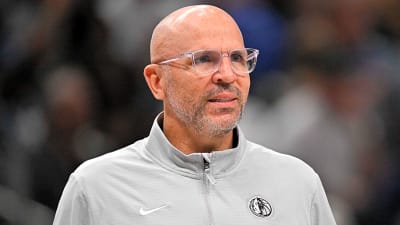
As the Montreal Canadiens continue their battle to earn the final Eastern Conference wild-card spot, general manager (GM) Kent Hughes will need to start looking ahead. Lane Hutson will be in the final year of his three-year NHL entry-level contract (ELC) next season.
This leaves Hughes with a difficult decision: to wait until the summer of 2026 to sign his young star defender to an extension or to jump in and try to sign him to a deal this summer, when he will be eligible as of July 1. For the Canadiens and the management of their salary cap moving forward, it would be in their best interest to lock him up to a long-term deal this off-season.
Canadiens’ Salary Cap Future
The salary cap is due to rise by $7 million this offseason from the current $88.5 million to $95.5 million. The cap is slated to go up from this season’s total to $113.5 million in just three seasons, a whopping $25-million increase. This is important to know because player salaries will rise quickly season over season. This means that using salary directly as comparables will be useless. A $7 million average annual value (AAV) cap hit in 2024-25 is 7.91% of the cap. When the cap is at $113.5 million, that same contract will then be 6.17%, the equivalent of a $5.5 million AAV.
This is why players will use the percentage of the cap when using comparables, and Hutson will not be an exception to that rule. Clearly, the Canadiens have an internal cap limit. Patrik Laine is the highest-paid forward, but his deal was inherited from the Columbus Blue Jackets. He was essentially a cap dump that Montreal took on, and it has seemed to work out well for the Canadiens. However, looking at the major contracts signed during Hughes’ tenure shows that the Nick Suzuki contract ($7.875 million AAV) is a line that has been set, as no one signed internally has surpassed his salary cap hit. Those deals are the Cole Caufield ($7.8 million AAV) and Juraj Slafkovsky ($7.6 million AAV) contracts. This means that all three of the Canadiens’ top-line players were signed to the maximum eight-year deals, giving Hughes significant cap flexibility moving forward.
Comparing Hutson’s Next Deal to Hughes & Fox
This offseason will be crucial to Montreal’s future success, not just because they will be in heavy pursuit of a proven top-six centre but also because Hutson is becoming a cornerstone to the team’s offensive output. This is why it will be imperative to sign the 21-year-old to a long-term contract. If he is being compared to Quinn Hughes and Adam Fox in terms of playing style and impact, he will likely want to use their first contract extensions as comparables.
When Quinn Hughes signed a six-year deal, paying him an average of $7.85 million with the Vancouver Canucks, the cap was $81.5 million or 9.6% of the cap value at that time. Adam Fox, who won a Norris Trophy as the top defenseman that season, signed his current seven-year contract for $9.5 million AAV or 11.5% of the cap value at that time. Both were extended in the COVID-19-shortened 2021 season, and both recorded more than 40 points in the 56-game schedule or a rate of 0.7 points per game. Hutson is still in his rookie season, but his 51 points in 65 games put him at 0.78 points per game. Even if he didn’t get another point for the rest of the season, his production this season is comparable to both Fox and Hughes’ back them.
Canadiens Must Focus on Hutson
Some will wonder if he will be “loyal” and take a team-friendly deal because Montreal “took a chance” when they selected him in the 2022 NHL Entry Draft. But that may only impact term, as it is clear the current roster is establishing a culture when players want to remain with the club. Yet, his play is a major reason for the Canadiens’ success this season as he has been far better than expected, so much so that he could shake up Hughes’ future plans. While the Canadiens do need a centre, they are also expected be looking at finding a veteran defenseman they can pair with Hutson or one with the potential to grow with Hutson, both of whom will have a significant impact on the salary cap.
Some fans hope for a team-friendly deal with something like an $8 million AAV over eight years, but that may be far too friendly. In regard to the term, he could choose to sign a five-year deal only. Why? Because after his five-year contract, he would be eligible for unrestricted free agency and could sign another highly-lucrative contract, just as Wyatt Johnson had done with the Dallas Stars this season.
Further complicating matters is Montreal’s internal cap structure using Suzuki’s deal, which was 9.55% of the cap when he signed it in October, 2021. However, that percentage is very similar to Hughes’ cap percentage (9.6%) for his extension, so it could be a good basis for comparison (also because Hutson is not in the running for the Norris this season as Fox was at the time he signed.) So, using 9.55% as the comparable and applying it to the 2025-26 salary cap, a potential long-term contract for the Canadiens’ top power-play unit quarterback would equal a $9.12 million AAV.
Hutson has several options available to him: short-term, long-term, go for the money, or go for stability. Whatever he decides, he is establishing himself as one of the top offensive defensemen in the league. He is already showing he belongs among the elite as he sits in eighth in scoring among defensemen in the NHL, and is doing it all as a rookie. Everything points to him only getting better in the coming years, so Hughes must sign his young defender to a long-term contract as soon as he can.
More must-reads:
- Trade grades: Canucks bail out division rival in Evander Kane trade
- Hockey Hall of Fame announces 2025 class
- The 'Most goals in a Stanley Cup Playoffs' quiz
Customize Your Newsletter
 +
+
Get the latest news and rumors, customized to your favorite sports and teams. Emailed daily. Always free!








